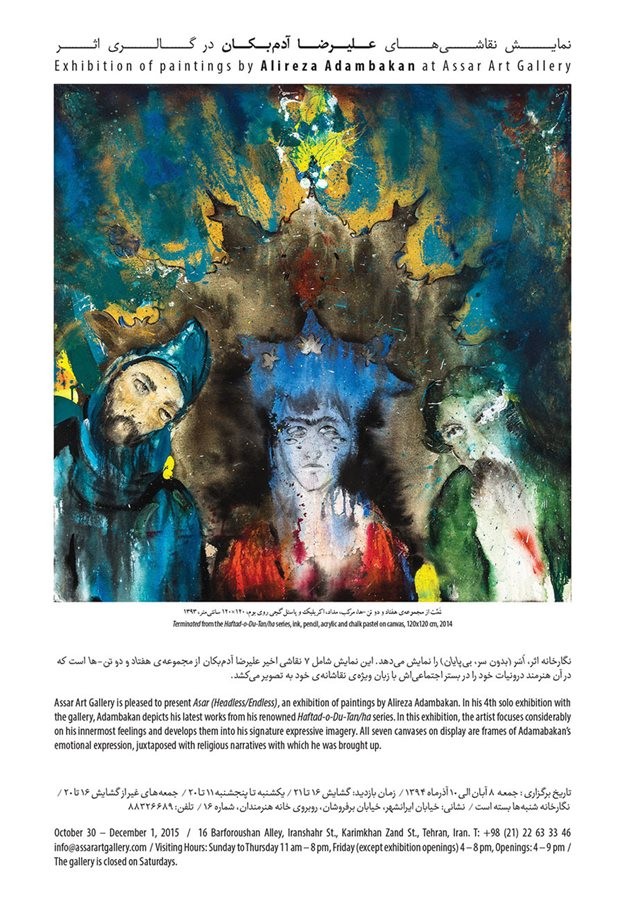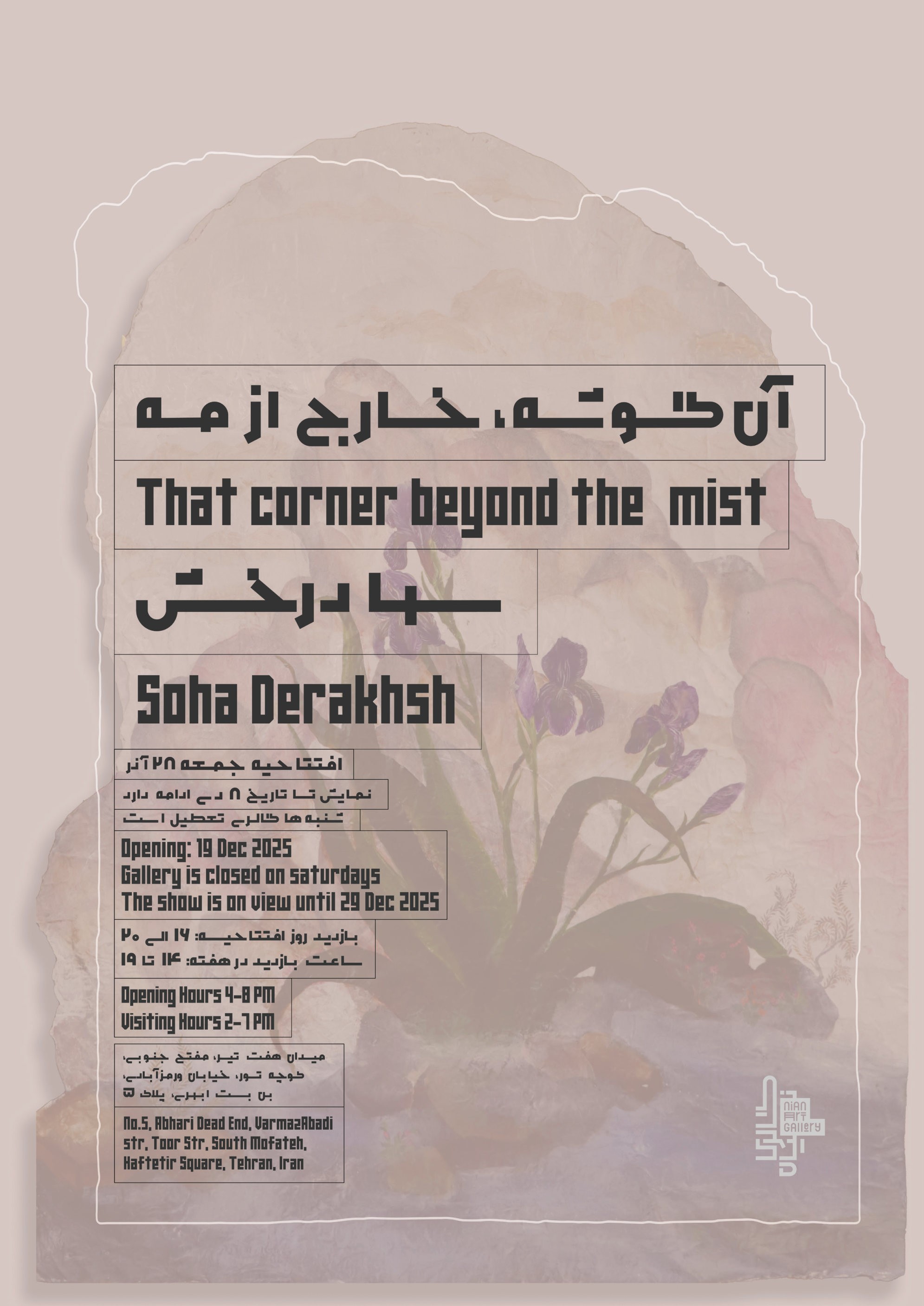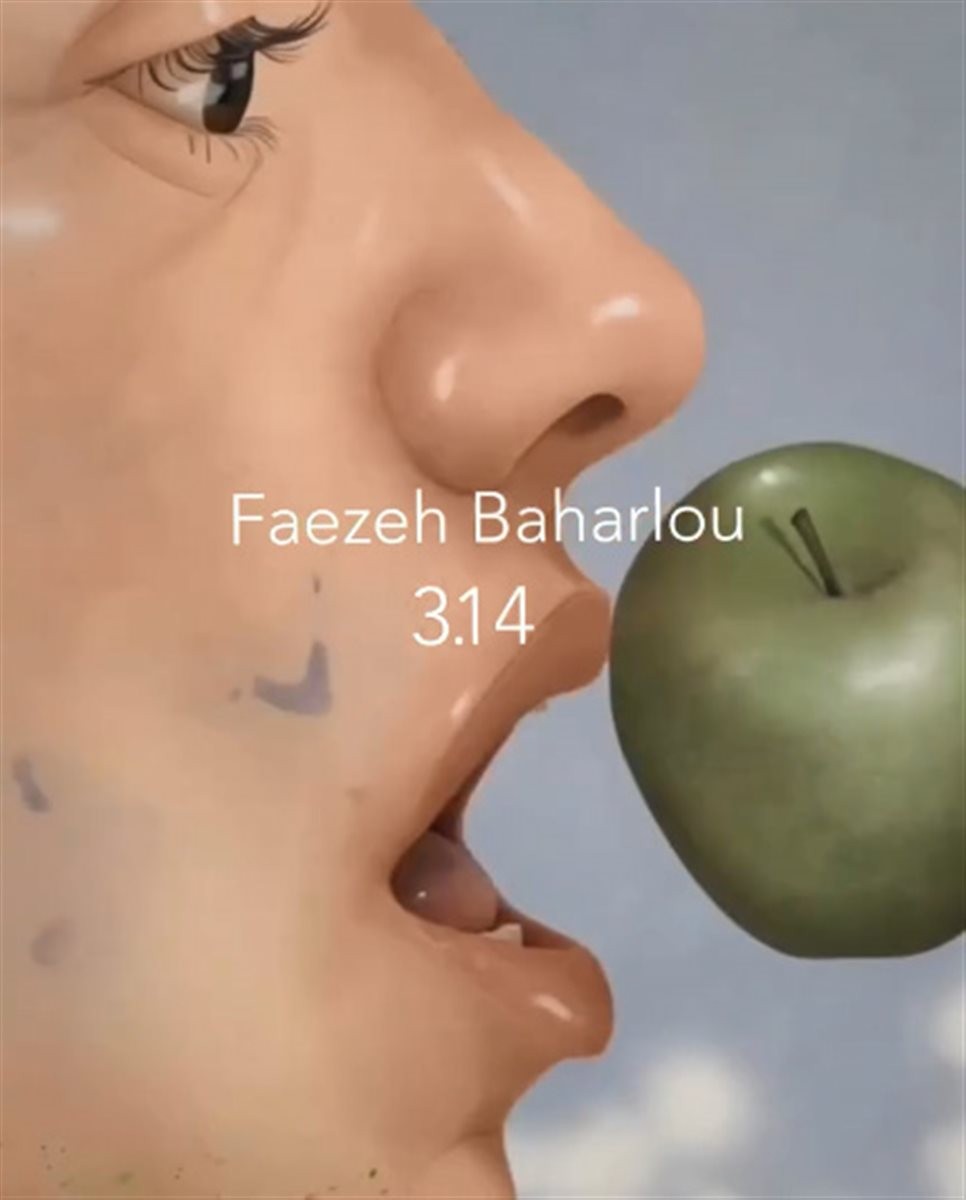Tehran,
no. 16, Barforoushan Alley, Iranshahr St., Karimkhan Zand St.
30 October 2015 - 1 December 2015
Playful Agony
The full-on sense of rush that exists at the very core of Adambakan's works never stops and can be felt throughout between the initial idea and what eventually takes shape as the final work. Accentuated colours and their leaps, and the movement of figures in each work are as if the artist attacks the bare white canvases: a kind of art that projects the artist's erratic mental state. Art here reaches a meaning higher than what is achieved using usual methods and contains in it a sort of art therapy. Meaning, that anything hurting the painter, from his existence to social details is translated bit by bit, into textures and forms. This is why Alireza Adambakan's new series can be considered one of the most accurate reflections of our current society. Reflection of us the contemporary crowd obsessed with the excitements of social issues that surround us in screaming colours and elastic sounds; and reflection of us living with constant worry and anxiety that has disfigured our social components. In the Headless/Endless series it is this situation being challenged. The situation in which people empty of independent identity being dragged around and their existence is subject to constant change as victims. Also, it is not possible to analyze this series without paying attention to the concept of religion? Due to the painter's close bond with religion and its mystical world, religious legends and stories have entered onto his canvases through the figures and characters' angels and the artist has narrated the agony or zest, religion has imposed on contemporary Iranians. Therefore, it may be possible to say that Alireza Adambakan's works contain in them, sort of a 'Playful Agony narrated by the artist's unique visual vocabulary and exclusive environment that has inspired and still leads him. The artist's playfulness can be found in all the details. With careful observation, one would notice small signs that are vague and sometimes clear showing that the painter has left for himself something beyond just the general idea, colours, and forms, and that these little signs are his own personal contracts with himself. The most important of these contracts are the forms and sketches under a layer of each work. It feels as if the colours are speaking to his audiences and forms are the foundations of his personal dialogue to himself. Therefore, it can be said that form in Adambakan's works is the main reflections and that colours have been used later as a more expressive vocabulary. But what ultimately completes each piece are the colours. The narration that exists in each of the works however is a bitter one. The story of a dying man immersed in water, or one who is beheaded and his body is shattered. This narration, if we could consider as a reading of the society, may seem pessimistic and exaggerated by some, or a truth felt around us by others. Whatever it is, it is a personal account of things and an astute of a story, the account and story of our times.
The full-on sense of rush that exists at the very core of Adambakan's works never stops and can be felt throughout between the initial idea and what eventually takes shape as the final work. Accentuated colours and their leaps, and the movement of figures in each work are as if the artist attacks the bare white canvases: a kind of art that projects the artist's erratic mental state. Art here reaches a meaning higher than what is achieved using usual methods and contains in it a sort of art therapy. Meaning, that anything hurting the painter, from his existence to social details is translated bit by bit, into textures and forms. This is why Alireza Adambakan's new series can be considered one of the most accurate reflections of our current society. Reflection of us the contemporary crowd obsessed with the excitements of social issues that surround us in screaming colours and elastic sounds; and reflection of us living with constant worry and anxiety that has disfigured our social components. In the Headless/Endless series it is this situation being challenged. The situation in which people empty of independent identity being dragged around and their existence is subject to constant change as victims. Also, it is not possible to analyze this series without paying attention to the concept of religion? Due to the painter's close bond with religion and its mystical world, religious legends and stories have entered onto his canvases through the figures and characters' angels and the artist has narrated the agony or zest, religion has imposed on contemporary Iranians. Therefore, it may be possible to say that Alireza Adambakan's works contain in them, sort of a 'Playful Agony narrated by the artist's unique visual vocabulary and exclusive environment that has inspired and still leads him. The artist's playfulness can be found in all the details. With careful observation, one would notice small signs that are vague and sometimes clear showing that the painter has left for himself something beyond just the general idea, colours, and forms, and that these little signs are his own personal contracts with himself. The most important of these contracts are the forms and sketches under a layer of each work. It feels as if the colours are speaking to his audiences and forms are the foundations of his personal dialogue to himself. Therefore, it can be said that form in Adambakan's works is the main reflections and that colours have been used later as a more expressive vocabulary. But what ultimately completes each piece are the colours. The narration that exists in each of the works however is a bitter one. The story of a dying man immersed in water, or one who is beheaded and his body is shattered. This narration, if we could consider as a reading of the society, may seem pessimistic and exaggerated by some, or a truth felt around us by others. Whatever it is, it is a personal account of things and an astute of a story, the account and story of our times.

Artists
Available Nearby Exhibitions
Shamlou Hundred Portraits
Tehran
12 December 2025 - 24 December 2025
That Corner Beyond the Mist
Tehran
19 December 2025 - 29 December 2025


